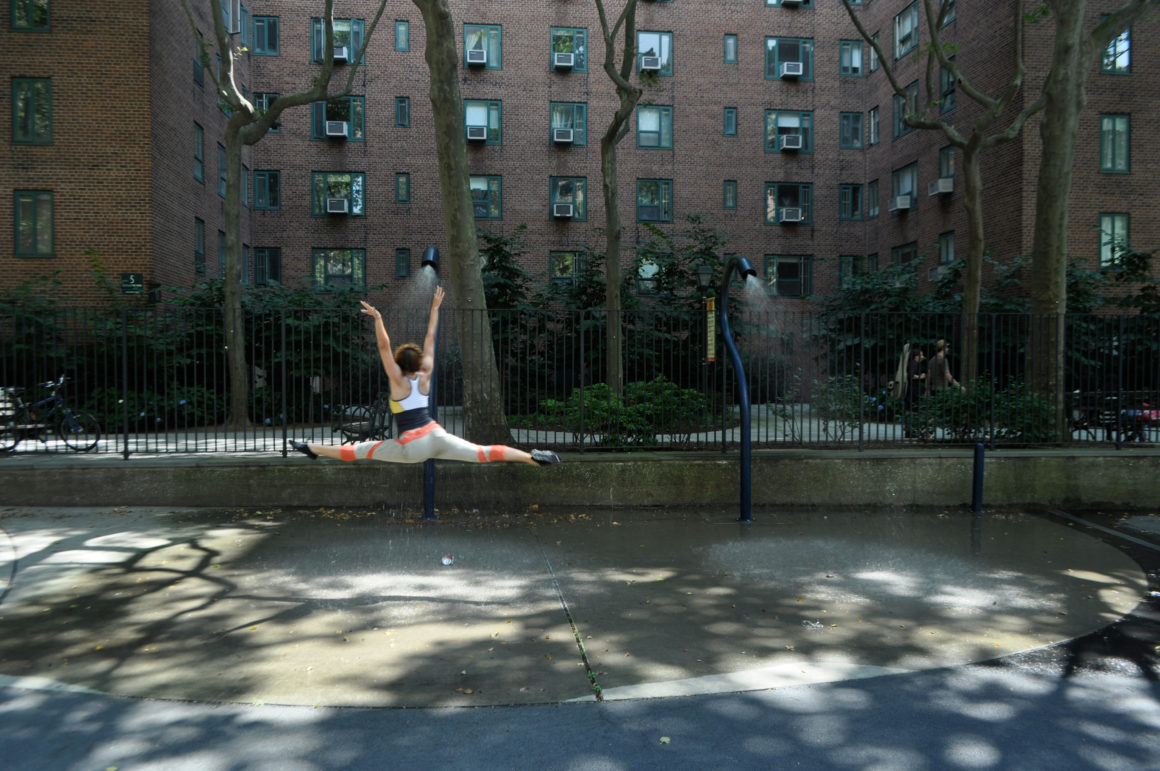
This month, we spoke with Van Alen member Todd Shalom, founder and director of non-profit participatory walks organization, Elastic City.
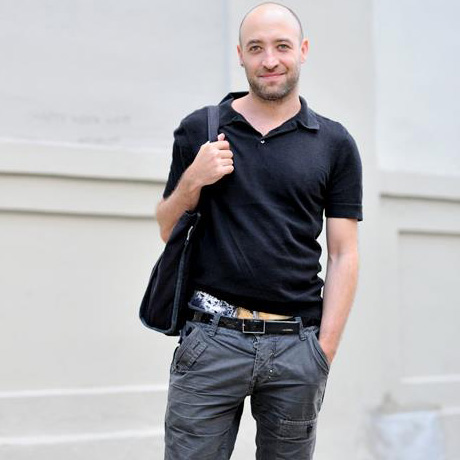
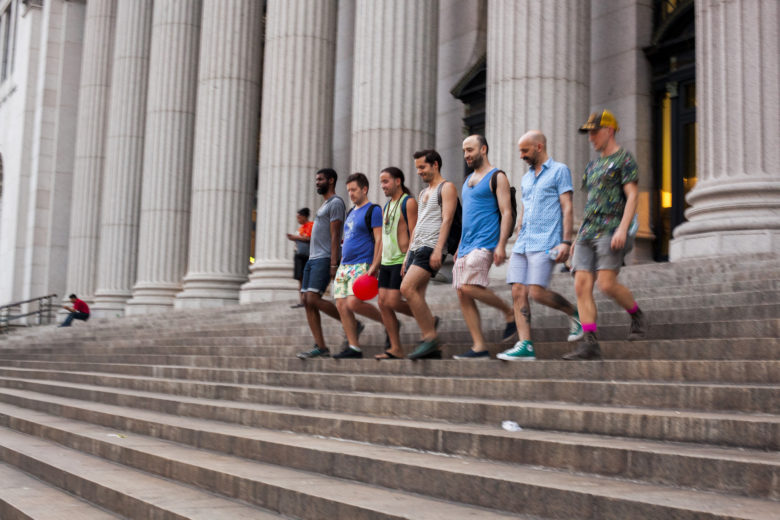
What inspired you to start Elastic City?
I started off in poetry and felt like I wasn’t having the dialogue I wanted. So I became interested in taking poetry off of the page and, via acoustic ecology, found the walk form. The acoustic ecologists, a Vancouver-based group from the late 60s and 70s, led mostly silent sound-based walks. I adapted some of their techniques and developed my own to create rigorously participatory soundwalks.
I did that for about 5 years, from 2003 to 2008, until I got sick of giving sound-based walks and wanted to expand the form to see what artists in other disciplines could do with it. I wanted to see how an artist can adapt their own skills, techniques, and expertise from their primary genre to the participatory walk form. Essentially: what do you want to give to people; what can you give to a group or what might a group do in public that individually they may not either feel comfortable or have the desire to do if they were alone. Overall, this work is about poetically responding to the things we encounter in public space according to the lens of a given artist.
What is the most memorable walk you’ve led?
That’s a hard one, there are many. Off the top of my head, I’d say, “Spread.” This was a walk with my primary collaborator, theater director (and Flea Theater artistic director) Niegel Smith. It was a walk commissioned by Visual AIDS to commemorate their 25th anniversary. For this walk, we wanted to celebrate their community, acknowledge a virus that took so many lives, and create a walk that lives in the present. For this, we decided to deal with the idea of the virus as metaphor, asking “What do you want to spread?”
As part of the walk, there is a moment when we are in a privately-owned public space not too far from Herald Square. We offered a prompt for participants on the walk to feel free to take off their clothes, leaving on their underwear. It’s legal in New York for one to go topless. So, we invited everyone on the walk that felt comfortable to take off their clothes and people did. We were stopped by a security officer in this space and argued with him. About five minutes later, he found us and apologized. He said, “I am wrong—you are totally within your rights to do this.” This just kind of jumps out to me as a memorable moment from a walk I’m proud of.
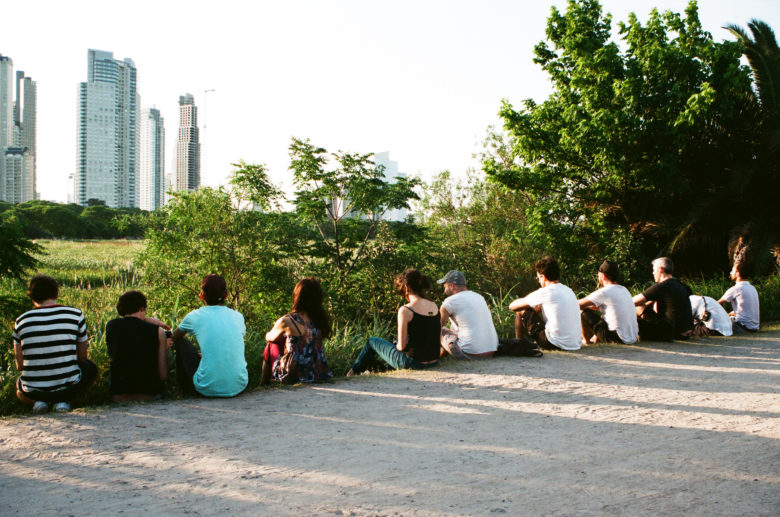
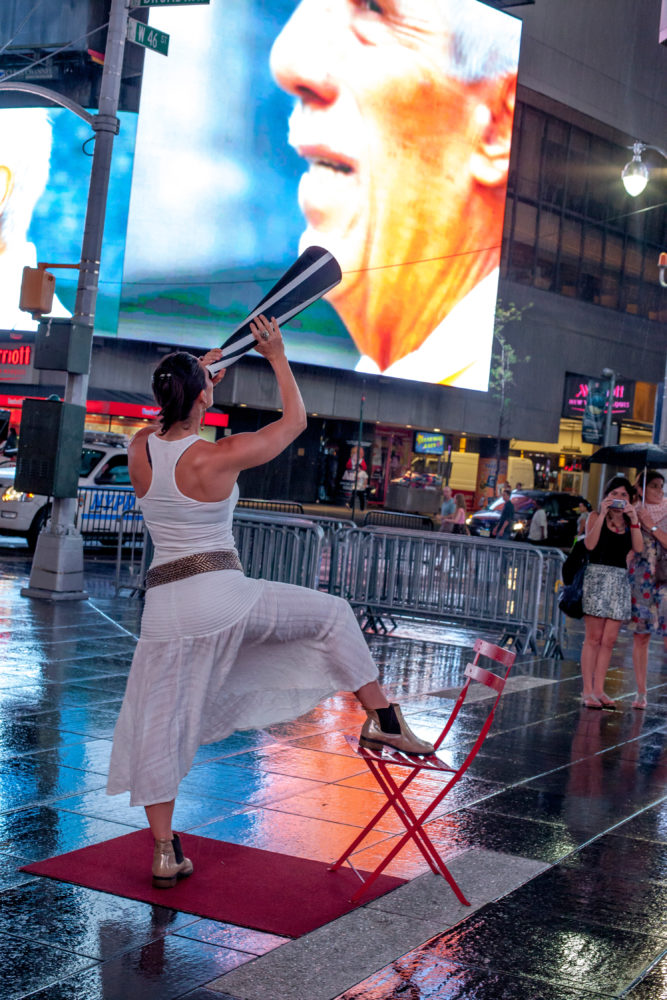
How has Elastic City evolved over the years?
Originally Elastic City started as an LLC. I started this and just needed to get this thing off the ground and the quickest way to do that was to make it a for-profit. But very quickly I realized this couldn’t be a for-profit and so it changed into a 501c3. So, structurally that’s one way in which it’s changed. In terms of programming, we originally only offered walks but now we offer walks, talks, ways, and other performances. The walks are participatory. Our talks this year aim to reframe what an artist talk can be. The ways are workshops on poetic decision-making. And we also produce participatory performances inside venues and outdoors, too. We’re most interested in pushing on whatever form we’re working in. Six years in and I think the work keeps getting stronger.
What are you most looking forward to for the future of Elastic City?
We’re in the early stages of working on a book. Might take two or more years until it’s out there in the world—but figuring out how to translate what we do into the book form is a new challenge and one that excites me.
How did you first learn about Van Alen?
I first knew of Van Alen through its bookstore and became more actively involved as David (van der Leer) came on board. I feel that David is positioning Van Alen in this fertile intersection between various art forms and architecture. He’s a visionary in his programming and it shows in both the form and content of Van Alen’s activities.
What are some connections between Elastic City and what we do at Van Alen?
I think we’re both focused on reframing. I think both organizations prioritize how people see and interact with public space. Elastic City does this in very small groups through participatory performances, and Van Alen crosses genres on a larger scale. We both exist in these gray areas that allow for malleability in terms of programming and organizational structure.
The 2015 Elastic City festival is July 7 – August 18.
Meet Todd and more design lovers by becoming a Van Alen member.